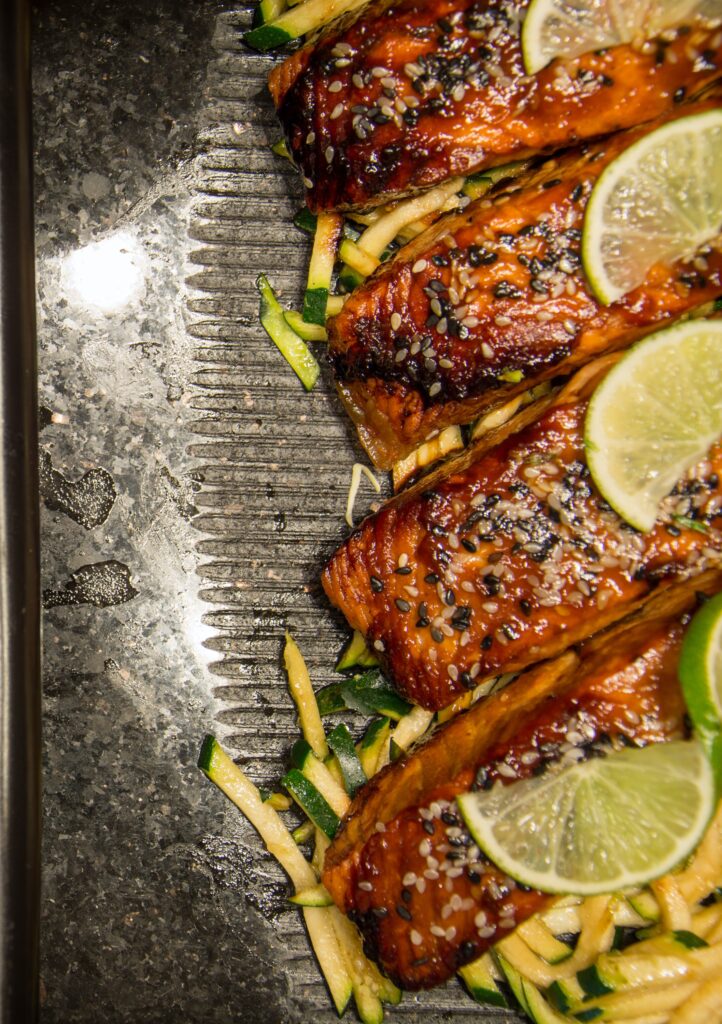INTRODUCTION
With regards to weight the executives and by and large wellbeing. There is no deficiency of dietary ways to deal with browse. Two well-known choices that frequently stand out as truly newsworthy are the low-calorie diet and the ketogenic (keto) dinner plan. Every one of these eating regimens has its extraordinary standards, advantages, and expected downsides. In this complete aide, we will dive into the vital contrasts between a low-calorie diet and a keto dinner plan. Assisting you with settling on an educated conclusion about which one adjusts best to your well-being and wellness objectives.
UNDERSTANDING LOW-CALORIE DIETS
Low-calorie diets are one of the most well-known and generally rehearsed dietary methodologies for weight reduction and weight the board. The fundamental rule behind these eating regimens is basic. Consume fewer calories than your body uses, making a calorie shortfall that prompts weight reduction. In this exhaustive aid, we will dig into the complexities of low-calorie eats. investigating their definition, and benefits. expected downsides, and pragmatic tips for fruitful execution.
WHAT IS A LOW-CALORIE DIET?

A low-calorie diet is a dietary methodology that includes decreasing your everyday calorie admission to make a calorie shortfall. This shortage happens when the quantity of calories you consume is not exactly the quantity of calories your body expects to keep up with its ongoing weight. Subsequently, your body is compelled to take advantage of its energy savings to meet its energy needs, prompting weight reduction.
CHARACTERISTICS OF A LOW-CALORIE DIET
- CALORIE RESTRICTION: The sign of a low-calorie diet is a calorie decrease. These weight control plans commonly include consuming altogether fewer calories than your assessed day-to-day upkeep calories. Caloric admission can go from 800 to 1500 calories each day, contingent upon individual variables like age, orientation, action level, and weight reduction objectives.
- BALANCED MACRONUTRIENTS: Low-calorie eats less carbs expect to give an equilibrium of macronutrients, including starches, proteins, and fats. While the essential spotlight is on calorie decrease, the objective is to meet fundamental wholesome requirements to help in general well-being.
- PORTION CONTROL: A critical part of low-calorie consumes less calories is segment control. Via cautiously estimating and controlling part measures, people can guarantee that they stay within their endorsed calorie limits.
- GRADUAL WEIGHT LOSS: Low-calorie slims are intended for progressive, consistent weight reduction. They ordinarily focus on a pace of 1 to 2 pounds (0.45 to 0.9 kilograms) of weight reduction each week, as more fast weight reduction can be related to muscle misfortune and other well-being concerns.

PROS OF LOW-CALORIE DIETS
- EFFECTIVE FOR WEIGHT LOSS: The key standard of calorie limitation is deductively shown to be viable for weight reduction. At the point when you reliably consume fewer calories than you consume, you will get more fit.
- SIMPLICITY AND ACCESSIBILITY: Low-calorie slims are straightforward and can be executed without the requirement for particular food varieties or enhancements. Anybody can rehearse segment control and decrease calorie consumption.
- FLEXIBLE FOOD CHOICES: Low-calorie slims down offer some adaptability in food decisions. While it’s fundamental to focus on supplement-thick food sources, people have the opportunity to choose different food sources inside their calorie limits.
- PORTION CONTROL EDUCATION: Following a low-calorie diet can assist people with turning out to be more mindful of part measures and foster better dietary patterns, which can be gainful for long-haul weight executives.
CONS OF LOW-CALORIE DIETS
- HUNGER AND CRAVINGS: A critical decrease in calorie admission can prompt expanded sensations of yearning and desires, making it try to adhere to the eating routine long haul.
- MUSCLE LOSS: Quick weight reduction on a low-calorie diet might bring about muscle misfortune, which can impede by large well-being and digestion.
- REDUCED ENERGY LEVELS: A significant calorie shortage can leave people feeling drained, exhausted, and lacking energy, which can influence day-to-day exercises and workout schedules.
- POTENTIAL NUTRIENT DEFICIENCIES: Incredibly severe low-calorie diets may not give every one of the fundamental supplements your body needs, possibly prompting supplement lacks and unexpected issues.
PRACTICAL TIPS FOR SUCCESSFUL IMPLEMENTATION

On the off chance that you choose to set out on a low-calorie diet, here are a few functional tips to assist you with exploring the excursion and accomplishing your weight reduction objectives while focusing on your well-being:
1) CONSULT A HEALTHCARE PROFESSIONAL:
Prior to beginning any low-calorie diet, talk with a medical care supplier or enrolled dietitian. They can assist you with deciding a protected and suitable calorie target in light of your singular necessities and objectives.
2) CHOOSE NUTRIENT-DENSE FOODS:
Select supplement-thick food sources that give fundamental nutrients, minerals, and other advantageous mixtures. Center around lean proteins, entire grains, natural products, vegetables, and sound fats to meet your nourishing necessities.
3) PRACTICE PORTION CONTROL:
Put resources into estimating cups and a kitchen scale to precisely quantify segment sizes. Figuring out how to control segment sizes is pivotal for remaining within your calorie limits.
4) STAY HYDRATED:
Drink a lot of water over the course of the day, as thirst can some of the time be confused with hunger. Remaining hydrated can assist with diminishing pointless nibbling.
5) PLAN MEALS AND SNACKS:
Plan your feasts and snacks ahead of time to stay away from imprudent eating choices. Having sound, segment-controlled choices promptly accessible can assist you with keeping focused.
6) LISTEN TO YOUR BODY:
Focus on craving and totality prompts. Eat gradually and carefully, and quit eating when you’re fulfilled, not excessively full.
7) INCORPORATE PHYSICAL ACTIVITY:
Consolidate your low-calorie diet with normal actual work to upgrade weight reduction and work on general well-being. Hold back nothing of cardiovascular activity and strength preparing.
8) TRACK PROGRESS:
Keep a food journal to follow your everyday calorie admission and screen your advancement. This can assist you with distinguishing examples and making important changes.
9) BE PATIENT AND REALISTIC:
Recollect that weight reduction requires some investment, and keeping up with sensible expectations is fundamental. Center around the cycle and celebrate little triumphs en route.
EXPLORING THE KETO MEAL PLAN
The ketogenic diet, is ordinarily known as the keto diet. It is a dietary methodology that has acquired colossal ubiquity for its capability to advance weight reduction. work on metabolic well-being, and give various other medical advantages. In this exhaustive outline. We will dive into the complexities of the keto feast plan, including its definition, key standards, likely advantages, and contemplations for those considering taking on this low-starch, high-fat eating routine.
WHAT IS A KETO MEAL PLAN?

A keto dinner plan is a particular dietary methodology intended to prompt and keep a condition of ketosis in the body. Ketosis is a metabolic state wherein the body essentially depends on fat for energy rather than starches. To accomplish ketosis, people following a keto dinner plan definitely lessen their sugar admission while expanding their utilization of sound fats.
CHARACTERISTICS OF A KETO MEAL PLAN
- LOW CARBOHYDRATE INTAKE: The characterizing component of a keto dinner plan is its tough limit of carbs. Regularly, starches are limited to 20-50 grams each day, contingent upon individual objectives and resilience levels.
- HIGH FAT INTAKE: Sound fats, for example, avocados, olive oil, nuts, seeds, coconut oil, and greasy fish, make up most of day-to-day calorie consumption. Fat utilization frequently contains around 70-75% of all our day-to-day calories.
- MODERATE PROTEIN: Protein admission is moderate on a keto diet, representing roughly 20-25% of day-to-day calories. This balance keeps an overabundance of protein from being changed over into glucose, which could upset ketosis.
- KETOSIS: The essential goal of a keto dinner plan is to instigate and keep up with ketosis. At the point when sugars are seriously limited, the body moves its essential energy source from glucose to ketones, which are delivered from put-away fat.

PROS OF KETO MEAL PLANS
- RAPID WEIGHT LOSS: The essential benefit of a keto feast plan is its capacity to advance moderately quick weight reduction. At the point when the body is in ketosis, it proficiently consumes and puts away fat for energy, prompting weight reduction.
- IMPROVED SATIETY: A high-fat eating routine can expand sensations of completion and satiety, diminishing yearning and desires. This can make it simpler to stick to calorie limitations.
- STABLE ENERGY LEVELS: Numerous people on a keto diet report stable energy levels and work on mental lucidity, which can upgrade general prosperity.
- POTENTIAL HEALTH BENEFITS: Some exploration proposes that a ketogenic diet might decidedly affect conditions like epilepsy, type 2 diabetes, and metabolic disorders.
CONS OF KETO MEAL PLANS
- CARB RESTRICTION CHALLENGES: Severe sugar limitation can be provoking for certain people to keep up with in the long haul. It might require huge changes in dietary patterns.
- KETO FLU: During the underlying change into ketosis, certain individuals experience influenza-like side effects, including migraines, exhaustion, and sickness. These side effects are frequently alluded to as the “keto flu.”
- NUTRIENT DEFICIENCIES: A foolish keto diet might prompt a lack of fundamental supplements, like nutrients and minerals since a few supplement-rich food varieties are confined or restricted.
- LIMITED FOOD CHOICES: The prohibitive idea of the eating routine can restrict food assortment and social feasting encounters, which might be trying for certain people.
TIPS FOR SUCCESS WITH A KETO MEAL PLAN
On the off chance that you choose to leave on a keto feast plan, here are a few viable tips to assist you with effectively exploring the excursion:
- PLAN MEALS: Plan your feasts ahead of time to guarantee you are meeting your macronutrient focuses while partaking in various food varieties. Use keto-accommodating recipes and dinner plans for motivation.
- STAY HYDRATED: Drink a lot of water to remain hydrated and assist with mitigating a portion of the underlying side effects related to changing into ketosis.
- INCLUDE FIBER: While starches are restricted, focus on fiber-rich vegetables and low-carb organic products to assist with keeping up with solid absorption and give fundamental supplements.
- CHOOSE HEALTHY FATS: Center around consolidating solid fats like avocados, nuts, seeds, and olive oil into your eating regimen to meet your day-to-day fat necessities.
- MONITOR KETOSIS: Use keto-explicit devices, for example, pee test strips or blood ketone meters to screen your ketone levels and guarantee you are in a condition of ketosis.
- CONSIDER ELECTROLYTES: Because of diminished insulin levels on a keto diet, you might encounter electrolyte irregular characteristics. Consider adding magnesium, potassium, and sodium-rich food varieties to your eating routine or accepting enhancements on a case-by-case basis.
- CONSULT A HEALTHCARE PROFESSIONAL: Before beginning a keto feast plan, particularly if you have a hidden medical issue, talk with a medical care supplier or enlisted dietitian to guarantee it’s protected and reasonable for your singular necessities.

MAKING THE RIGHT CHOICE FOR YOU
Now that we’ve investigated the vital parts of both low-calorie diets and keto feast plans. How would you conclude which one is appropriate for you? The decision ought to be founded on your singular objectives, inclinations, and contemplations.
PICK A LOW-CALORIE DIET IF:
1) You favor a more adjusted way to deal with macronutrients.
2) You need adaptability in your food decisions and are not keen on severe starch limitation.
3) Continuous weight reduction lines up with your objectives.
4) You are searching for a straightforward and manageable way to deal with calorie decrease.
PICK A KETO DINNER PLAN IF:
1) You need to accomplish quick weight reduction.
2) You will focus on severe carb limitation.
3) Stable energy levels and decreased hunger appeal to you.
4) You are keen on investigating the potential medical advantages of ketosis.
It’s critical to take note that the two eating regimens can be successful for weighing the board. The way to progress with either approach lies in adherence and consistency. of how the eating routine lines up with your way of life and inclinations.
CONCLUSION
In the discussion of low-calorie consumes less calories versus keto dinner plans, there is the nobody-size-fits-all response. The decision between these two dietary methodologies ought to be founded on your singular objectives, inclinations, and contemplations. The two eating regimens can uphold weight the executives and generally speaking well-being when followed accurately.
Before leaving on any dietary arrangement. Consider counselling a medical services supplier or enlisted dietitian to guarantee that your picked approach is protected and proper for your particular necessities. Eventually, the best eating routine is one that you can support and that lines up with your drawn-out well-being and health objectives.
FAQs
These people might be unwittingly consuming an excessive number of fats, for example, coconut oil, to increment ketones. Following calories might offer a rude awakening on what ordinary part estimates resemble. As a general rule, severe control of calorie balance is pointless on the ketogenic diet.
A ketogenic diet is intended to involve fat for fuel … in any case. assuming that you’re consuming an excessive number of calories for your necessities. still conceivable you’ll store fat similarly as you would on any dietary example, makes sense Ginger Hultin, MS, RDN, CSO, representative for the Foundation of Nourishment and Dietetics.
Weight reduction, keto, etc., is about a calorie shortage. To remain keto however don’t have any desire to lose any more weight, the arrangement is simply to eat somewhat more fat and protein than you had been eating, without raising carbs enough to escape ketosis.

